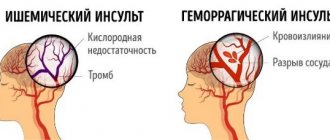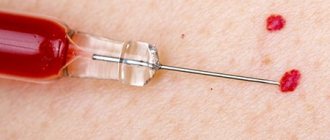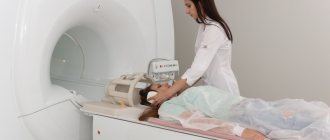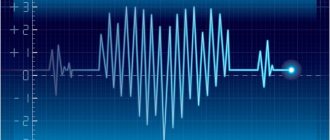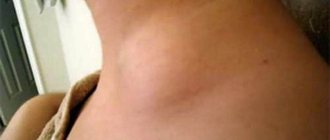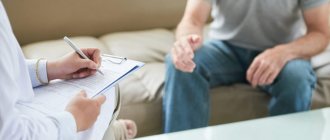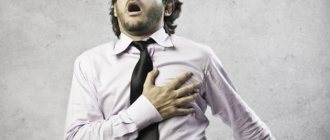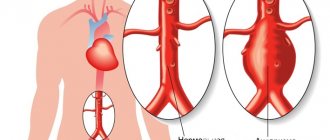Once you master the whole complex, you won’t need medications.
by rehabilitation therapist Alexander Shishonin will help reduce blood pressure and get rid of headaches
— Often, hypertension is a consequence of cervical osteochondrosis, when the first cervical vertebra, the atlas, is displaced and compresses the vessels supplying the brain. The brain receives little oxygen and instructs the heart to increase the strength and frequency of heart contractions. The pressure rises and blood flow to the brain increases. As a result, hypertension develops.
In this case, it is useless to take pills. It is necessary to strengthen the neck muscles in order to eliminate instability of the atlas (less often, of another cervical vertebra) and to free the vessels compressed by the vertebrae and spasmed by the muscles. Then the pressure will return to normal. The simplest gymnastics that you can do at home will help with this.
It's the same with chronic headaches. They are often caused by tension and spasm in the neck muscles. Especially if a person is constantly under stress: he instinctively presses his head into his shoulders to protect himself. As a result, blood microcirculation and nutrition of surrounding tissues are disrupted, intervertebral discs and ligaments are weakened, the vertebrae become unstable and compress the blood vessels.
To understand whether blood flow through the vertebral arteries is impaired, you need to do an ultrasound. If vascular compression is confirmed, you can begin gymnastics.
At first, it is better to practice while sitting in front of a mirror to control every movement.
Three exercises with warm-up and stretching are express gymnastics. The full set contains 12 exercises. You can find them on the website “Club of Former Hypertensive Patients”
You can perform gymnastics every day or every other day. However, if after a month after classes you do not feel significantly better, you should seek professional help. Perhaps the vertebra or vessel is located atypically. This means that a universal option is not suitable.
The main differences between Shishonin gymnastics
What is the reason for the high effectiveness of Shishonin’s gymnastics? Unlike other methods based on physical exercises, this gymnastics is less traumatic and easy to perform even with severe damage to the vertebrae, when any movement causes excruciating pain. All exercises included in the treatment complex are performed very slowly and do not require much effort. The classes do not require any exercise equipment or sports equipment, and the surrounding conditions do not matter. You can practice in any room and at any time when you have 10-15 minutes free.
Shishonin gymnastics can be performed both at home and in the office
The complete complex consists of three parts:
- warming up the neck muscles;
- basic exercises;
- self-massage.
The best result is achieved by the full complex, but if for some reason it is not possible to devote more time to classes, the main emphasis is on exercises. At an early stage, such gymnastics allows you to completely restore the health of the spine, but in a more severe form you can only reduce symptoms and alleviate the patient’s condition.
The main emphasis is on basic exercises aimed at working deep and superficial muscles.
Important! Shishonin’s gymnastics are indicated not only for osteochondrosis, but also for a number of other diseases: intervertebral hernia, spinal curvature, hypertension, migraines, insomnia. As a preventive measure, it is recommended for sedentary work and a sedentary lifestyle, as well as for people exposed to psycho-emotional stress.
Benefits of Shishonin gymnastics
Exercises to prevent relapses
In order to consolidate the results obtained and not encounter the problem of cervical osteochondrosis again, you need to perform the exercises throughout your life. It would be nice if a person decides to go in for sports: swimming, volleyball, fitness. Any of the above sets of exercises will do. To prevent cervical osteochondrosis, increase the number of repetitions of each exercise to 15-20 times.
In order to enroll in physical therapy courses (physical therapy), contact the Aspect of Health clinic in Ufa. You can call us by phone.
Shishonin exercises for the neck: is there a new version?
No, the complex itself has not changed one iota. The doctor himself has changed radically.
Now it looks like this:
Dr. Shishonin: Ph.D., rehabilitation specialist, head of the clinic
In the photo we see a completely different doctor, confident in himself, with steel in his blue eyes. Where has the former timid, shy, brown-eyed man gone? But looking closer, you realize that it’s him, time has just passed and some adjustments have been made.
But the main thing is not the physical changes. It seems that the entire activity of the doctor has been completely reformatted, in which there is simply no place left for a modest semi-handicraft video on YouTube about physical therapy. Today, Alexander Yuryevich is engaged in extensive scientific and commercial activities, under his management of the kinesitherapy and rehabilitation clinic “Health of the 21st Century”. Here is a screenshot from the clinic’s page:
The truth about hypertension and atherosclerosis
Dr. Shishonin is more occupied today with the theory of hypertension, and even created a club of former hypertensive patients. Has his own blog, doctor-shushonin.ru. Wrote a book Cyberlife. He gives interviews in newspapers, for example, in AiF, on the topic of atherosclerosis, where he states:
- Cholesterol plaques are formed not from excess fat, but from improper removal of bile by the liver.
- Therefore, it is necessary to treat primarily the liver and hormonal disorders at the central level (hypothalamus-pituitary gland).
- You need to improve your diet by consuming low-fat dairy foods, unrefined oil, and fatty sea fish.
- Atherosclerosis must also be combated with the help of physical exercise (numerous daily squats, walking) and breathing exercises.
Where is the good old neck exercise for Shishonin?
Alas, attempts to find at least one mention of that famous Shishonin complex on the websites of Sh. himself failed to be found.
Versions:
- This is still not the same Shishonin.
- The doctor retired from practice and was completely mired in theory.
- He doesn’t want to dwell on the old (after all, the term “osteochondrosis” itself has become obsolete), he wants to move forward, and as luck would have it, give the people the old set of exercises.
If the latter is true, then I would like to ask Dr. Shishonin not to forget about his gymnastics for the neck, which people like so much, and sometimes mention it or develop a new version.
What is hypertension and why is it dangerous?
Blood pressure (BP) values show how much pressure the blood exerts on the walls of blood vessels when the heart contracts and relaxes.
If the values on the tonometer show figures of 140/90 mm Hg or more, this indicates an increase in blood pressure, and if this condition persists for a long time, it indicates hypertension [1]. Hypertension can occur independently or develop as a consequence of other pathologies - in this case, secondary hypertension develops. If the cause of high blood pressure cannot be eliminated, the disease is chronic and, without proper treatment, constantly progresses [1]. The danger of hypertension lies not in the fact of increased pressure, but in the consequences of this condition. Pathology significantly increases the risk of dangerous cardiovascular disorders - cardiac failure, arrhythmia, heart attack and stroke [2]. Also, against the background of a prolonged increase in blood pressure, damage to the heart, brain structures, kidney vessels, and eyes occurs [1]. A sharp rise in pressure (in some cases - up to 200/120 mm Hg and above) is dangerous due to the risk of a hypertensive crisis - a set of symptoms that develop due to overstrain of the circulatory system at a time of high blood pressure (Fig. 1). This condition can be life-threatening - heart attacks and strokes most often occur precisely at the time of a hypertensive crisis [3].
Figure 1. Signs of a hypertensive crisis. Source: MedPortal
At the same time, the symptoms of hypertension may not appear for a long time - the pathology is called the “silent killer”, since patients often do not measure their blood pressure for years and, accordingly, are not aware of its increase. As the condition worsens, signs of the disease may appear, such as:
- weakness;
- headaches, especially in the morning;
- causeless nosebleeds;
- arrhythmias - complaints of palpitations, irregular heart function;
- deterioration of vision - “loss” of areas of vision, flashing “dots” before the eyes;
- tinnitus.
An intense increase in blood pressure is often accompanied by loss of energy, facial flushing, nausea and vomiting, sweating, anxiety, varying degrees of impaired consciousness, chest pain and other symptoms, but in some cases even a hypertensive crisis can occur asymptomatically [2].
Important! The only way to determine and assess the course of hypertension is to measure blood pressure, so people with this diagnosis need not only to be regularly monitored by a therapist or cardiologist, but also to independently monitor their blood pressure [2].
Treatment of the pathology depends on the type of hypertension - if the pressure rises due to other diseases, it is necessary first of all to restore dysfunction of these organs, and in the primary form of the pathology (hypertension), blood pressure can be normalized only with the help of constant medication and non-drug therapy [2; 3].
Conservative treatment for hypertension
To normalize high blood pressure, doctors select drug treatment for patients with hypertension. First of all, the specialist should prescribe a drug from the group of antihypertensive drugs or even a combination of several medications - the choice depends on age, the degree of increase in blood pressure and the stage of the disease.
There are 5 main classes of drugs against hypertension; they are aimed at blocking certain enzymes, ions or receptors of biologically active substances that are involved in the pathogenesis of increased blood pressure. Also included in the list of “first-line” drugs are diuretics - diuretics reduce the volume of blood, as well as intercellular fluid, which reduces the load on the heart and stabilizes pressure in the blood vessels.
It is important for patients to adhere to the rules for treating hypertension, which are relevant in all situations, regardless of the medications prescribed:
- carry out all medical prescriptions;
- Constantly carry out self-monitoring of blood pressure;
- take medications regardless of the numbers on the tonometer - therapy for hypertension is permanent;
- Do not stop taking medications or change dosages on your own [5].
Self-monitoring your blood pressure helps you avoid serious problems caused by hypertension.
Photo: prostooleh - ru.freepik.com Correction of hypertension is not limited to the use of antihypertensive drugs and includes lifestyle changes, stress management and physiotherapy treatments. Therapeutic exercises are also included in the list of mandatory activities for hypertension - special exercises have a multifaceted restorative effect on the body of such patients [4].
How to measure blood pressure using a mechanical tonometer
In order to measure pressure with a mechanical tonometer, you need:
- sit in a comfortable position and relax, while your arm should be bent at the elbow joint and lie on a flat surface,
- remove the shoulder part of the arm from clothing and fasten the cuff on it (its lower edge should be 3-4 cm above the elbow bend),
- place a stethoscope (phonendoscope) on the inside of the elbow joint in the place where the pulse can best be felt,
- using a hand pump, start pumping air into the cuff,
- bring the pressure gauge needle to values exceeding the expected pressure by 30-40 mm. rt. Art. (for example, if the patient’s normal blood pressure is 135/90, then you can stop at 170),
- slowly release air from the cuff, waiting for tones to appear - these are the sounds of a heartbeat; their appearance marks the boundary of systolic pressure, and their disappearance marks the boundary of diastolic pressure. Simply put, if tones appeared at number 150 and disappeared at number 100, then the result is 150/100).
An automatic blood pressure monitor is easier to use (you don’t need to listen to your heart rate yourself), but it is less accurate. Such devices operate on batteries or from the mains.
Contraindications to cervical gymnastics
The great advantage of neck gymnastics according to Dr. Shishonin’s method is the minimal number of contraindications for use. People of all age groups and with different diagnoses can do it without harming their health. Carefully read the list of possible complications:
- Ankylosing spondylitis.
- Recently suffered a stroke or cerebral infarction.
- Dizziness and headache of unknown cause.
- Recent meningitis.
- Surgery on the cervical vertebrae, recently performed.
- Congenital anomaly of the structure of the upper spine.
- Acute and chronic infectious diseases of the spine.
Basic rules for performing the complex
Before you start performing physical therapy exercises, you need to familiarize yourself with the basic basic rules:
Can cervical osteochondrosis cause high blood pressure?
- the exercise itself is performed 1.5-2 hours after finishing the meal, not earlier;
- before performing the exercises, the cervical area and the back of the head are pre-warmed with light, slightly massaging circular movements;
- physical activity should increase gradually - for the first 7-10 days it will be enough to do 3-4 exercises from the seven described below;
- Regularity is important - in the first week you should do gymnastics daily so that the body can get used to physical activity, later it is recommended to reduce the exercises to three times a week;
- during gymnastics, you need to keep your back straight and your head level; the exercises themselves should be performed slowly and carefully, since quick jerks will not lead to a good result, but will only aggravate the situation.
Sources
- Clinical guidelines “Arterial hypertension in adults.” Russian Society of Cardiology
- Hypertension. WHO
- Algorithms for managing a patient with hypertensive crisis. All-Russian public organization “Promoting the prevention and treatment of arterial hypertension “Antihypertensive League””.
- Bismak E.V. The effectiveness of using physical rehabilitation means for stage I-II hypertension at the outpatient rehabilitation stage. Phys. education of students creative specialties. — 2008. — No. 3. — P. 9-15
- Algorithms for managing a patient with arterial hypertension and hypertensive crisis. Russian Society of Cardiology
- Gymnastics for hypertension. Clinic of Dr. Shishonin
- Shishonin gymnastics for the neck with cervical osteochondrosis. ANO "Central Clinical Medical Unit"
- Correct breathing for arterial hypertension according to the method of Dr. Shishonin. Shishonin portal. Be healthy with Dr. Shishonin!
The essence of the method and indications for conducting classes
Shishonin's gymnastics for hypertension will be especially useful for patients in whom the disease has developed due to an age-related decrease in the tone of blood vessels. Exercises also have a beneficial effect on the blood circulation process if hypertension occurs against the background of cervical osteochondrosis.
Therefore, the main goal of Shishonin’s set of exercises for the neck is to restore normal blood circulation, due to which not only attacks of hypertension will pass, but also many other unpleasant symptoms will disappear.
Neck complex
Gymnastics classes according to A. Shishonin’s method are indicated for patients suffering from:
- cervical osteochondrosis;
- neurocirculatory dystonia;
- migraines;
- frequent attacks of cephalalgia;
- sleep problems;
- decreased concentration.
Such classes will be especially useful for people whose work involves prolonged sitting.
It is possible to achieve positive results from such gymnastics only if all exercises are performed regularly. If therapy has just begun, then it is necessary to practice daily for 14-21 days.
When blood pressure begins to normalize, the number of approaches can be reduced to 2-3 per week. But you shouldn’t completely abandon gymnastics, because, as already noted, it is an excellent way to prevent osteochondrosis and hypertension.
Massage after exercise
Self-massage helps relax muscles after exercise.
Photo: Racool_studio - ru.freepik.com Dr. A. Shishonin in his works indicates the need to consolidate the effect of gymnastics with the help of self-massage [7]. This procedure additionally warms up the muscles, improves blood flow and oxygen filling of tissues.
But it is important to remember that massage techniques are contraindicated for patients during a hypertensive crisis - the effect on the muscles activates metabolism, and during the procedure you can get the opposite effect - an increase in blood pressure. Also, massage is contraindicated for people with acute inflammatory diseases, skin pathologies, cancer and a number of other pathologies, so the possibility of performing the procedure is determined only by a doctor [7].
The simplest version of self-massage is tapping your knuckles along the neck, kneading the muscles of the shoulder girdle and neck-collar area. With hypertension, all movements must be directed strictly from top to bottom, otherwise a sharp increase in blood flow in the brain structures can lead to the opposite effect - an increase in blood pressure.
Drive them in the neck!
– What is the root of our health problems?
– Poor health is an indicator of improper functioning of the body. And the epidemic of physical inactivity leads to “breakdown”. We don’t move enough and try to further reduce activity by “making our life easier” with elevators, escalators, cars, food delivery, and so on. But nature created man with the expectation that he would walk up to 30 km a day in search of food. He had to run and at the same time actively move his neck in order to track down prey and beware of attacks from enemies. A modern person sits more and hardly moves his neck, and often uses one static position - when he tilts his head and looks at the gadget screen. In this case, the neck muscles become overstrained, blood flow in the vertebral arteries is disrupted, and blood flows poorly to the brain. General and local physical inactivity leads to stagnant metabolism, against which all chronic non-infectious diseases develop: from atherosclerosis to cancer. It has already been proven that oncology is formed with a deficiency of oxygen and excess glucose.
– Why is the cervical spine so important?
– It’s obvious even anatomically. Powerful vertebral arteries supplying the brain stem pass through the cervical region, and only nerves pass through all other vertebrae. The brain stem is a vital area. For example, if this area is affected during a stroke, death is inevitable. Therefore, physical inactivity of the cervical spine is very dangerous. But modern medicine, unfortunately, does not take this into account. For example, doctors who perform an ultrasound of the neck vessels conclude that a person’s “tortuosity of neck vessels corresponds to age norms.” But the vessels of the neck should not squirm at any age! This is the cause of most diseases.
Disease “sitting” on the neck. How are osteochondrosis and hypertension related? More details
Purpose of the technique
Osteochondrosis is characterized by pathological changes in the tissues of the spine, which is manifested by such unpleasant symptoms as pain in the back and neck, limited mobility, and impaired sensitivity in the extremities. The more the disease progresses, the more painful the manifestations, and over time the condition only gets worse. Osteochondrosis does not go away on its own, and in an advanced state, even complex treatment does not guarantee a complete cure of the disease, and therefore you should seek help as early as possible.
Osteochondrosis in the cervical region leads to serious consequences, including pinching of the spinal nerves and destruction of the vertebral bodies
The purpose of Shishonin’s technique is:
- elimination of pain caused by degenerative processes in the spine and accompanying pathologies;
- restoration of normal blood and lymph circulation;
- normalization of metabolic processes in the tissues of the spine;
- relieving swelling and muscle tension;
- improving the patient's well-being.
All this is achieved through the active work of the neck muscles, and the main condition for obtaining tangible results is regular exercise for 1-2 months.
Regular exercise will help you quickly get rid of painful neck pain.
If you want to know what to do if there is an exacerbation of osteochondrosis of the cervical spine, and also consider the symptoms and effective treatment methods, you can read an article about this on our portal.

